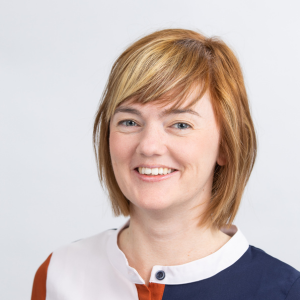
Natalie Holmes, PhD
Senior Research Fellow
Australian Centre for Microscopy and Microanalysis, The Unviversity of Sydney, Australia
Atom Probe Tomography for Predicting Timelines of Bioceramic Bone Scaffold Integration in vivo
Dr Natalie Holmes is a Senior Research Fellow at the University of Sydney where she studies the structure-function relationships in nanostructured materials with the advanced atom probe tomography suite. Her research focus is on bioceramic bone implants and biological tissues, and tracking implant integration by monitoring elemental transfer across the bone-implant interface. She obtained her PhD at the University of Newcastle in 2016, and following that led research projects at the University of Newcastle and Karlstad University (Sweden) in developing nanostructured materials using advanced synchrotron microscopy techniques, with applications in biomedical devices and solar cells.
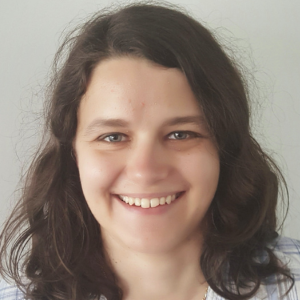
Isabelle Mouton, PhD
CNRS Research Engineer
University Grenoble Alpes, CNRS, Grenoble INP, SIMAP, France
Atom probe tomography of Zr-alloys using in nuclear fuel cladding
Isabelle Mouton has recently been appointed as CNRS research engineer at SIMAP laboratory in Grenoble in charge of the APT platform following the installation of a brand new LEAP6000HR. Previously she was leading research at CEA Saclay on nuclear materials with an emphasis on nanostructural investigation with APT especially on Zr alloy based cladding tubes. Isabelle has a wide expertise in APT studies. Before joining the CEA, she earned a PhD at the University of Rouen, France and completed her experience with postdoctoral positions at CEA Grenoble, France and Max-Planck institute in Dusseldorf, Germany. Since 2011, her research topics have evolved from semiconductor materials and microelectronic devices microanalysis to metallic materials, and particularly materials for the nuclear industry.
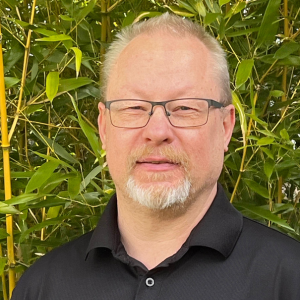
Prof. Mattias Thuvander
Associate Professor
Chalmers University of Technology, Göteborg, Sweden
Atom Probe Tomography and in-situ Synchrotron Study of a Precipitation Hardened Steel
Associate Prof. Thuvander obtained his PhD degree at Chalmers University of Technology in 1998. The thesis work dealt with atom probe field ion microscopy (APFIM) of grain boundary segregation and precipitation in non-hardenable Ni-base alloys for nuclear steam generators. He did a post-doc in Oxford, working with Prof. George Smith and Prof. Alfred Cerezo using APT to study nanocrystalline Ni and Ni-Fe. After ten years in Swedish industry, he returned to Chalmers in 2009. Since then, he has been involved in materials research and the application of APT in various areas, mainly alloys for nuclear applications, but also steel, Ni-base alloys, hard thin films, implants etc. He is currently head of the Division Microstructure Physics.
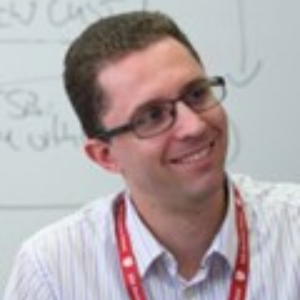
Sebastian Koelling, PhD
Research Associate
Department of Engineering Physics, Polytechnique Montréal, Canada
Hidden structures in Atom Probe Tomography data
Dr. Sebastian Koelling is working as a research associate at Polytechnique Montreal. He earned his PhD at IMEC in 2012 working on establishing Atom Probe Tomography as a viable analysis method in monitoring semiconductor manufacturing processes. Since then, he has worked on utilizing Atom Probe for a wide range of material classes ranging from metals over superconductors to semiconducting nano-materials and biominerals. He is currently working on establishing a new Atom Probe laboratory named PolyAPT in Montreal. The first of its kind in Quebec. PolyAPT will focus on providing service for the local ecosystem and on advancing the use of APT to support the development of new bio-, battery, and quantum materials.

Prof. Sophie Primig
Professor of Physical Metallurgy
School of Materials Science & Engineering, UNSW Sydney, Australia
Advancements in the processing of aerospace alloys enabled by correlative microscopy
Sophie Primig is a Professor in the School of Materials Science & Engineering at UNSW Sydney. She was awarded both her MEng (2008) and PhD (2012) in Materials Science & Engineering from Montanuniversitaet Leoben, Austria. Following a short period as Post-Doctoral Researcher and an academic position at Leoben, she moved to UNSW Sydney in 2015, initially as Lecturer. She was an Australian Research Council (ARC) DECRA Fellow (2018-2020) and a UNSW Scientia Fellow (2019-2022).
Her research interests are in Physical Metallurgy. She has a track record in both fundamental and applied research. Her research goal is to develop an advanced capability in structure-property relationships across the processing routes of structural metallic materials via additive manufacturing and advanced thermo-mechanical routes. She combines state-of-the-art experimental techniques such as multiscale correlative microscopy including atom probe microscopy with mechanical testing and contemporary modelling approaches. The focus of her research is on aerospace alloys, and this has often been linked closely to the needs of industrial partners.
Sophie has attracted funding via the ARC Linkage and Discovery schemes, industry collaborations, and the Australia-US Multidisciplinary University Research Initiative Program. She is an Editor of Journal of Materials Science, Vice Chair of the TMS Phase Transformations Committee, and former President of the Materials Australia NSW Branch.

Ann N. Chiaramonti, PhD
Project Leader, EUV Atom Probe Tomography
Material Measurement Laboratory, NIST, USA
Atom Probe Tomography with a Wavelength-Tunable Femtosecond-Pulsed Coherent Extreme Ultraviolet Light Source
Dr. Chiaramonti is currently the Material Measurement Laboratory leader of the Extreme Ultraviolet Atom Probe Project at the National Institute of Standards and Technology in Boulder, Colorado, USA. She specializes in materials characterization using electron- and ion-based imaging and scattering techniques, primarily transmission electron microscopy and atom probe tomography. Dr. Chiaramonti earned degrees in Materials Science and Engineering from the University of Michigan (B.S.E.) and Northwestern University (Ph.D.). She completed a three-year postdoctoral fellowship in the Materials Science Division at Argonne National Laboratory before joining the Applied Chemicals and Materials Division of the National Institute of Standards and Technology in 2009.

Prof. Emily Peterman
Associate Professor & Department Chair of the Earth and Oceanographic Science
Department at Bowdoin College, Maine, USA
Earthquakes and atoms: Nanoscale insights into fault evolution
Dr. Emily Peterman is a geoscientist who obtained her BA from Middlebury College and her PhD from the University of California, Santa Barbara in the USA. She pursued postdoctoral research at the University of California, Santa Cruz and Stanford University before assuming her current role as an associate professor and department chair at Bowdoin College in Maine, USA. Dr. Peterman’s research program focuses on investigating the impact of micro- and nano-scale processes on crustal-scale tectonism and the evolution of lithosphere strength. Her research methodology involves combining field, laboratory, and modeling work across different spatial and temporal scales. She specializes in analyzing mineral chemistry and crystal microstructure to determine the processes, conditions, and timing of mineral (re)crystallization. Dr. Peterman has recently undertaken projects utilizing atom probe tomography to examine trace element segregations in both naturally occurring and experimentally treated minerals
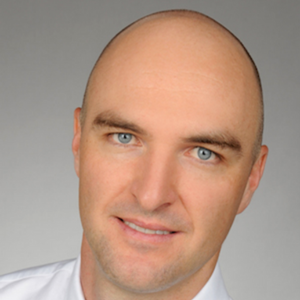
Prof. Peter Felfer
Professor of materials science
Institute for General Materials Properties, Department of Materials Science, Friedrich-Alexander Universität Erlangen-Nürnberg, Germany
A fully open source toolchain for atom probe tomography of hydrogen
Peter Felfer is currenlty holding a professorship in atom probe tomography and 3D nanoanalytics at the Friedrich-Alexander Universität Erlangen-Nürnberg. He received his MSc. in Materials Science from the Leoben University in Austria and a PhD from the University of Sydney. His research focus for much of his career was the characterization of metallic materials, especially steels and superalloys. In recent years, after receiving an ERC starting grant for his project ‘Fundamentals of Hydrogen in Structural Materials’ he has been developing a research program in the area of structural materials for hydrogen applications. This includes experiments for materials characterization (APT, TDS) starting at very low hydrogen partial pressures of 10-12 mbar up to hydrogen exposure at high hydrogen pressures of 1000 bar, thus spanning 18 orders of magnitude. With his research group, he has built and developed custom made APT instrumentation including an ultra-low hydrogen APT instrument, cryo transfer equipment and a FIM. This was done together with software development for APT data acquisition, calibration/ reconstruction and 3D data analysis. All this forms an end-to-end APT toolchain that is fully open source for anyone to build their own system for custom experiments.

Ingrid McCarroll, PhD
Senior Research Associate
Max-Planck-Institut für Eisenforschung GmbH, Germany
Re-evaluating our understanding of magnesium oxidation using atom probe tomography
Dr. Ingrid McCarroll has recently taken up a position as a postdoctoral researcher at the Max Planck Institute for Iron Research. Her previous experience includes 4.5 years as a senior research assistant at The University of Sydney, where she fulfilled the role of Atom Probe Scientist. Ingrid completed her PhD with Prof. Julie Cairney at The University of Sydney using atom probe tomography to study oxidation of steels and magnesium alloys. As part of her PhD, Ingrid spent a year at The University of Oxford where she developed, in collaboration with Dr. Daniel Haley, a reaction cell attached to an atom probe. This reaction cell enabled the deuteration and oxidation of materials, with direct vacuum transfer between the reaction cell and the atom probe analysis chamber. In her role as atom probe scientist, Ingrid continued to develop methodologies for studying early oxidation of magnesium alloys and the deuteration of materials. Together with Alexander Rosenthal she implemented equipment that enabled a cryogenic and vacuum transfer integrated laboratory, connecting a FIB/SEM, atom probe, and purpose-built glovebox. Ingrid’s studies include the relationship between hydrogen and the embrittlement of steels and the influence of hydrogen on the early stages of magnesium corrosion.
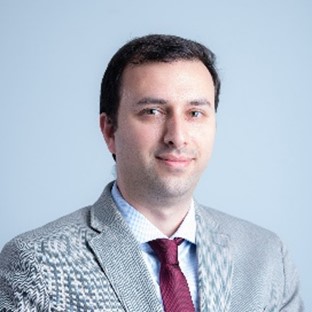
Hossein Sepehri-Amin, PhD
Group leader, Green Magnetic Materials Group, NIMS, Tsukuba, Japan
National Institute for Materials Science, Tsukuba, Japan
Correlative (S)TEM/APT analysis of magnetic materials for green energy conversions
Dr. H. Sepehri-Amin is a materials scientist working as group leader in green magnetic materials group at National Institute for Materials Science (NIMS), Tsukuba, Japan. He is also associate professor at the University of Tsukuba. He earned his Ph. D. in material science and engineering from the University of Tsukuba in 2011. His research interest is about development of high-performance magnetic materials for green energy conversions by a combinatorial research approach of multiscale microstructure characterizations using SEM/(S)TEM/APT, micromagnetic simulations, and materials processing. He has published 148 peer reviewed journal papers (total citation of 4885, h-index:34 based on web of science) and more than 32 invited talks in the domestic and international conferences.